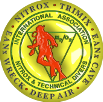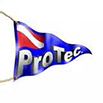ProTec Intro to Cave
1. Intention of this course
This course offers basic knowledge for cave diving, thus the exploration of the inside areas of a cave system. The risk can be minimized just through the combination of the right education together with the suitable and correct equipment, so that this risk can be calculated to make cave diving an interesting diving sport. It is a very popular course for the serious holiday cave divers.
Instruction by ProTec Intro Cave Instructor.
2. Training environment
Just cave systems with the following characteristics are suitable as training environment:
An easy access able entry and exit (no rope techniques are necessary), large cave, no sumps or restrictions (on dive route); this means two divers can dive side by side or one above the other. The cave area should be well known and good outlined. EANx is recommended.
3. Prerequisites
Advanced diving skills, which should be proved to the instructor
Cavern Diver certification.
More than 15 logged Cavern dives in different areas.
Min. age of 18 years
4. Accomplishment
The instructor may adapt the course program according to the local conditions. Only the faultless accomplishment of one module of the course program permitted the advance to the next course module.
The instructor is required not to allow any inadmissibility concerning also the equipment.
Even if there is no need (while exercises in less depth) for the complete (heavy) equipment, dive training with the full equipment is essential during this course.
Use of Nitrox is recommended.
5. Theoretical lessons
General Part
To check and repeat the “overhead environment” skills.
Air supply, air planning
Equipments – spare equipments – redundancy
Buddy situation
Cave diving in general
The ProTec cave diving program.
Class 1
The formation and the kinds of caves
The weather and the possible effect on current & visibility.
The diving plan at a rough air supply and decompression.
Class 2
The movement in the cave
To determine the danger (silt, current, narrow places).
To move without whirling up the sediment (the ways of using fins)
Class 3
Orientation and safely diving in the caves (guidance lines, marking arrows, to recognize and outline the cavearea).
The use of reels (incl. Spare and jump / gap – reel), to recognize and use correctly the marks, diving sketches UW
Class 4
Cave diving = solo diving, buddy help at emergency cases, situation studies.
Buoyancy control at buddy help (to search for stop points, to coordinate the movement).
Class 5
UW – communication (light signals : OK, NOK / touch contact, numerical symbol)
6. Practical lessons
Equipment
Apart from/instead of the standard equipments the following are to be used/carried with:
Two independent double cylinders (min.2×10 L) – Third-rule!
An octopus with about 2m. air – pressure hose.
Apart from the primary light (30 – 50 Watt for min. 50 minutes).
2 soar lamps
Thick neoprene hood or helmet.
Spare knife (line cutter).
Mark arrows
Spare mask
Writing board / dive slate
Guidance line for minimum 150 meter (reel), spare line, dive line.
The diver should be able to handle all the equipment items, the valves also, without any strange assistance.
Generally applies
Max. penetration depth about 100 meter.
No deco dives.
To employ one reel per dive, but each student exercises alternatively with the reel.
Line guidance as usual with groups)
Theory part for each UW practise module
Planning: To discuss the way by sketches, air management, to specify the tasks and positions of each particularly diver, to check abort – emergency plan.
Briefing: (shortly before the dive/in front of the place): To repeat the important points inclusively an equipment check.
Debriefing: To recognize the mistakes and possibilities to improve, to revise them.
Quality requirements
Best buoyancy: Sediment should not be whirled up and uncontrolled contact with environment should not be allowed.
The divers should always completely control, the dive, without sign of stress or Nitrogen anaesthesia, so to act with self-assurance.
The permission to the next difficult course module can just be given after the positive termination of the module before.
After a negative result, the diver should be guided to the surface (Assi) or a break off should be made.
At cave dives never cause intentionally emergency situations (for example; to turn off cylinder valves). Just simulate.
Never simulate an emergency situation without prior arrangement (briefing).
Module 1
Maximum distance from entrance 30 meter.
To check up all the talents of Intro Cave skills taking into consideration the “full cave” situation.
Module 2
Easy cave diving:
The Student dives simple tracks – to penetrate maximum 50 m in the cave.
(It can be related with module 1), to exercise reel techniques.
Module 3
To master silt – out – situations. Behavior by poor visibility, loss of light.
Module 4
To operate the own equipments by zero visibility and solve the simulated problems.
Module 5
Getting out with buddy breathing. Buddy & self- help
Module 6-7
To apply the skills,
To gather experience, carry out further dives,
To explore the caves within the course level
Max. covered diving tracks about 300 meter
Plan all the dives, within the no-decompressiontime. Divide some exercises, if necessary, between several single dives. 2 students maximum per instructor the cave. Additionally an assistant or dive supervisor as rescue or support diver should be taken. Do not penetrate too deep into cave system (see max), it is better to repeat the same sections in both-directions to simulate longer penetration, so that the emergency exit remains “reachable”.
7. Courseware
Visit SCmembers area for any material / price list.
– Manuel DSC de Cave Diving en Français (obligatoire)
– NSS Cave Diving Manual (Recommandé)





